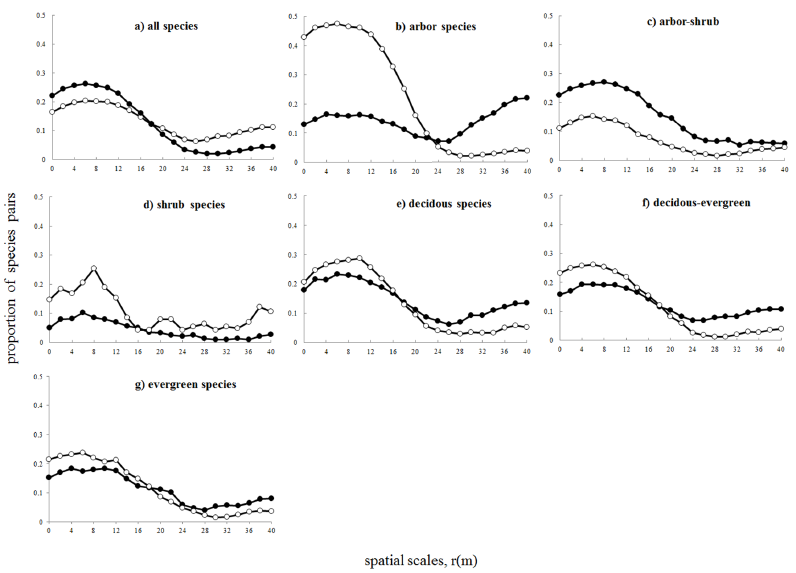Species Associations at BDGS Not Well-Explained by Stochastic Geometry of Biodiversity
2014-06-18
One of the long-standing goals in community ecology is to understand how communities of plants are assembled. There is increasing awareness of how spatial patterns and processes influence species coexistence. The stochastic dilution hypothesis has been proposed to explain species coexistence in species-rich communities. The relative importance of the stochastic dilution effects with respect to other effects such as competition and habitat filtering required to be tested.
Using data from a 25-ha species-rich subtropical forest plot with a strong topographic structure at Badagongshan in central China, the PhD student WANG Qinggang, supervised by Prof. JIANG Mingxi at Wuhan Botanical Garden, analyzed overall species associations and fine-scale species interactions between 2,550 species pairs. They compared the results of BDGS plot with those of the 25-ha Changbaishan plot, 25-ha Sinharaja plot, Sri Lanka and 50-ha Barro Colorado Island plot.
The result showed that: (1) the proportion of segregation in overall species association analysis at 2 m neighborhood in this plot followed the prediction of the stochastic dilution hypothesis that segregations should decrease with species richness but that at 10 m neighborhood was higher than the prediction. (2) The proportion of no association type was lower than the expectation of stochastic dilution hypothesis. (3) Fine-scale species interaction analyses using Heterogeneous Poisson processes as null models revealed a high proportion (47%) of significant species effects.
However, the assumption of separation of scale of this method was not fully met in this plot with a strong fine-scale topographic structure. They also found that for species within the same families, fine-scale positive species interactions occurred more frequently and negative ones occurred less frequently than expected by chance. These results suggested effects of environmental filtering other than species interaction in this forest.
It could be concluded that the stochastic dilution hypothesis only be partly supported and environmental filtering left discernible spatial signals in the spatial associations between species in this species-rich subtropical forest with a strong topographic structure.
This work was financially supported by National Natural Science Foundation of China and Chinese Forest Biodiversity Monitoring Network. Results entitled “Species Associations in a Species-Rich Subtropical Forest Were Not Well-Explained by Stochastic Geometry of Biodiversity” were published in PLoS ONE (2014, 9(5): e97300).

The proportion of significant interspecific associations for all species and different life forms at 0-40m scale. Open circles indicate attraction, solid circles indicate repulsion. (Image by WANG Qinggang)